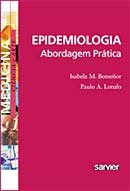Maria Inês Azambuja é professora do departamento de medicina social da UFRGS. Ela advoga há muito a hipótese da associação de epidemias como a gripe espanhola no anos 10 e, depois o pico da mortalidade por doença coronariana na década de 50. O texto mais amplia a análise e, inclui outras hipóteses. O texto completo poderá ser solicitado á autora em miazambuja@terra.cm.br
The inflammation paradigm: Towards a consensus to explain coronary heart disease mortality in the 20th century. CVD Prevention and Control (2008) 3, 69�76
Summary The etiology of coronary heart disease (CHD) has been debated over thelast 60 years. There exists an alternative explanation to the rise in CHD mortality,consonant with knowledge about the role of inflammation. It is proposed that acohort association existed between rates of vulnerability to influenza deaths in1918 and CHD mortality among survivors from those vulnerable birth cohorts.According to this hypothesis, hypercholesterolemia may have been a marker ofthe 1918 immune-priming, with CHD deaths resulting from bursts of endothelialinflammation and thrombosis associated with influenza re-infections during the followingdecades. We propose a reconsideration of the way we model atherogenesis,from initiation and promotion to vulnerable substrate(s) and trigger(s).Also suggested, based on this hypothesis, is a possible shared condition between vulnerablesubstrates, which upon triggering, is associated with evolution to acuteevents, through an imbalance between COX and LOX products. This paradigm hasimplications for global prevention policies.

Nenhum comentário:
Postar um comentário